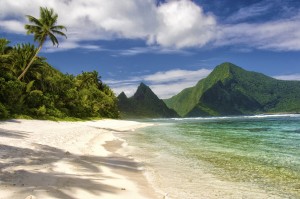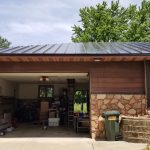Ta’u island in American Samoa will rely on solar panels and Tesla batteries as it does away with diesel generators
by Eleanor Ainge Roy for The Guardian
A remote tropical island has catapulted itself headlong into the future by ditching diesel and powering all homes and businesses with the scorching South Pacificsun.
 Using more than 5,000 solar panels and 60 Tesla power packs the tiny island of Ta’u in American Samoa is now entirely self-sufficient for its electricity supply – though the process of converting has been tough and pitted with delays.
Using more than 5,000 solar panels and 60 Tesla power packs the tiny island of Ta’u in American Samoa is now entirely self-sufficient for its electricity supply – though the process of converting has been tough and pitted with delays.
Located 4,000 miles from the west coast of the United States, Ta’u has depended on over 100,000 gallons of diesel shipped in from the main island of Tutuila to survive, using it to power homes, government buildings and – crucially – water pumps.
When bad weather or rough seas prevented the ferry docking, which was often, the island came to a virtual stand-still, leaving Ta’u’s 600 residents unable to work efficiently, go to school or leave their usually idyllic paradise.
Utu Abe Malae, executive director of the American Samoa Power Authority, said Tutuila has subsidized Ta’u diesel shipments for decades to the tune of US$400,000 a year – and continually ran the risk of a serious environmental disaster if the delivery ships capsized during the notoriously treacherous journey.
“Shipping diesel has been a long-standing environmental risk, and an inefficient use of taxpayers money,” said Malae.
“We want all of American Samoa to be solar-powered by 2040 – but Ta’u has been the priority and test-run.”
Construction of Ta’u 1.4 megawatt micro-grid began two years ago, and was immediately bogged down by poor weather, transport delays and technical difficulties.





